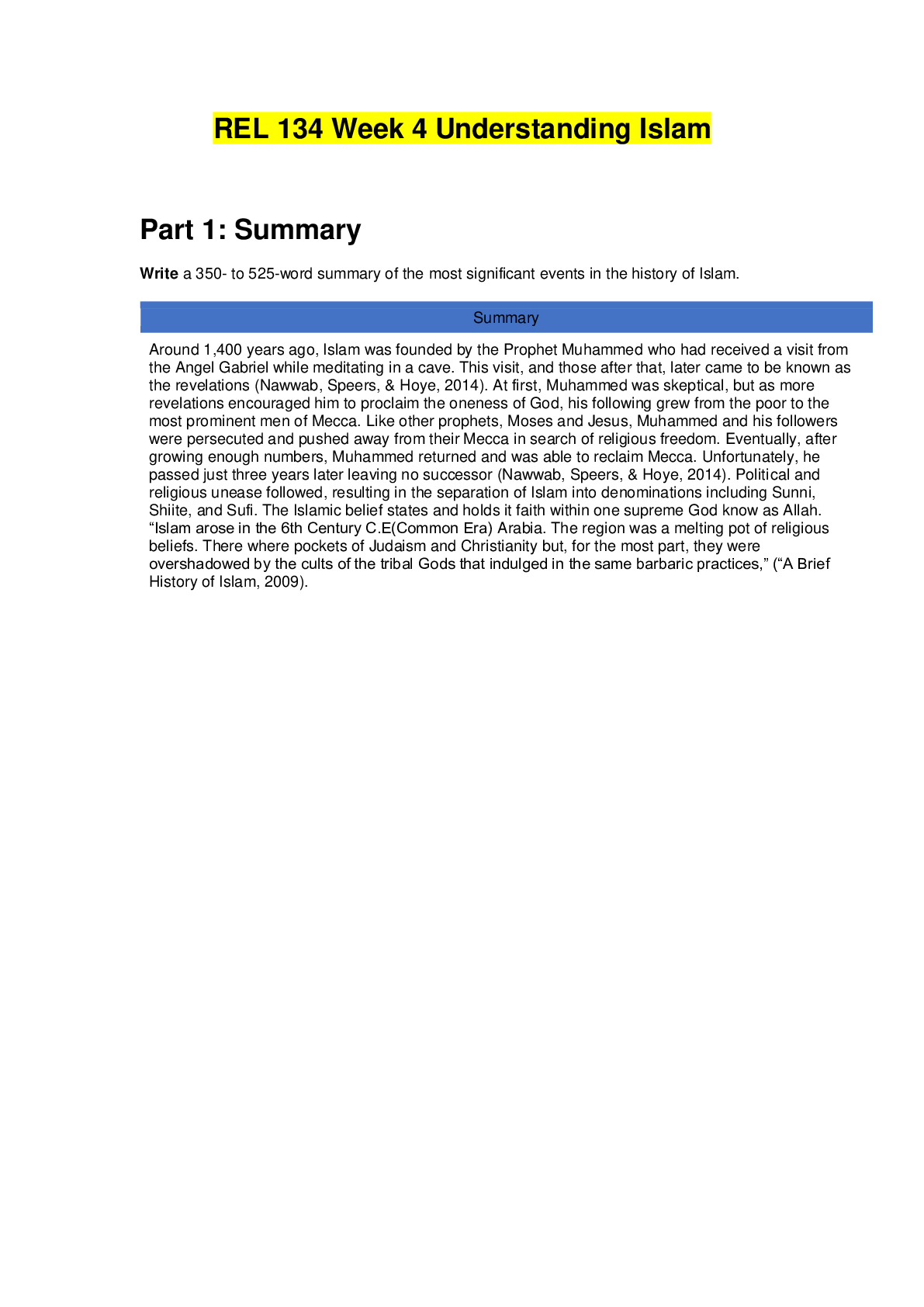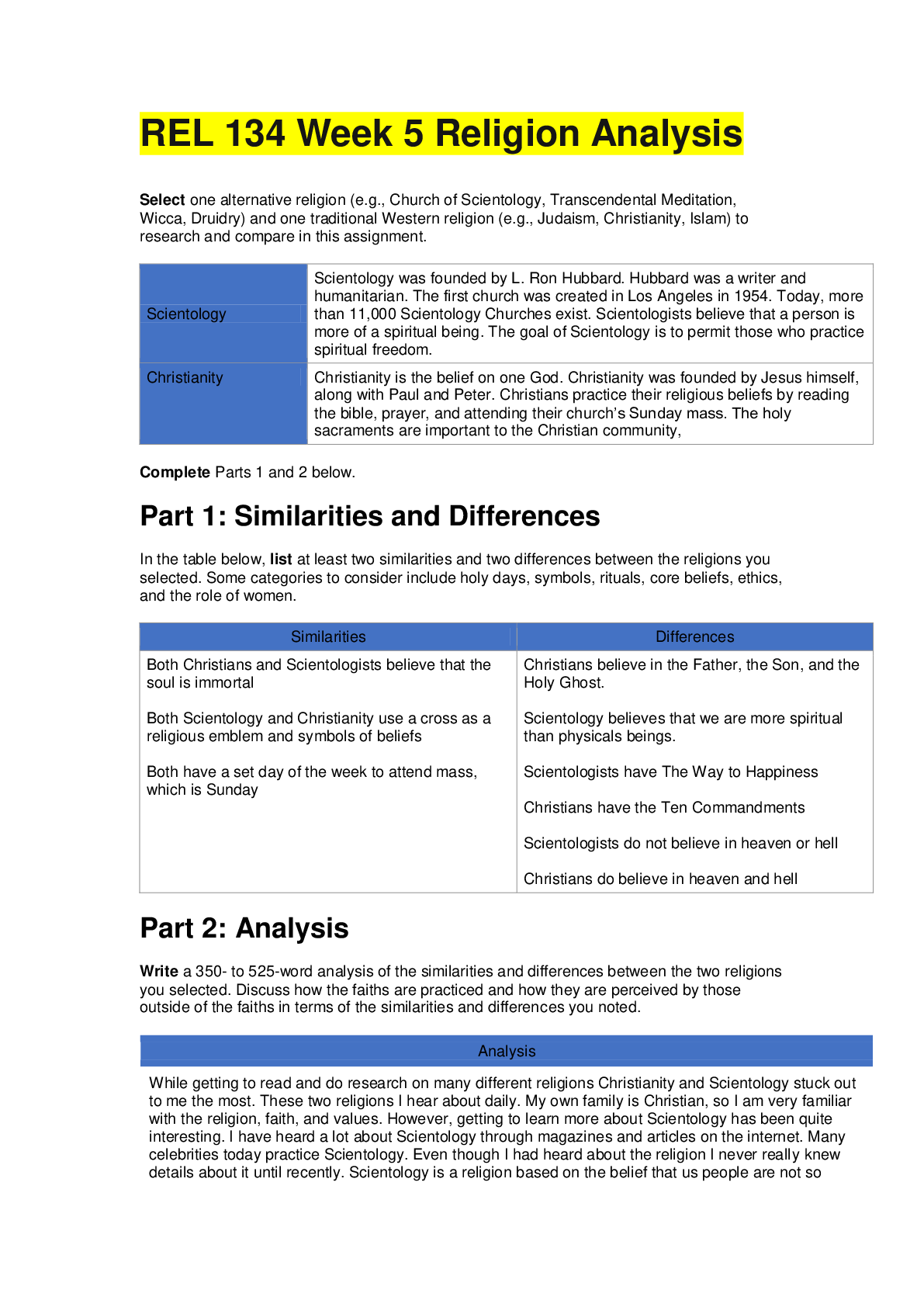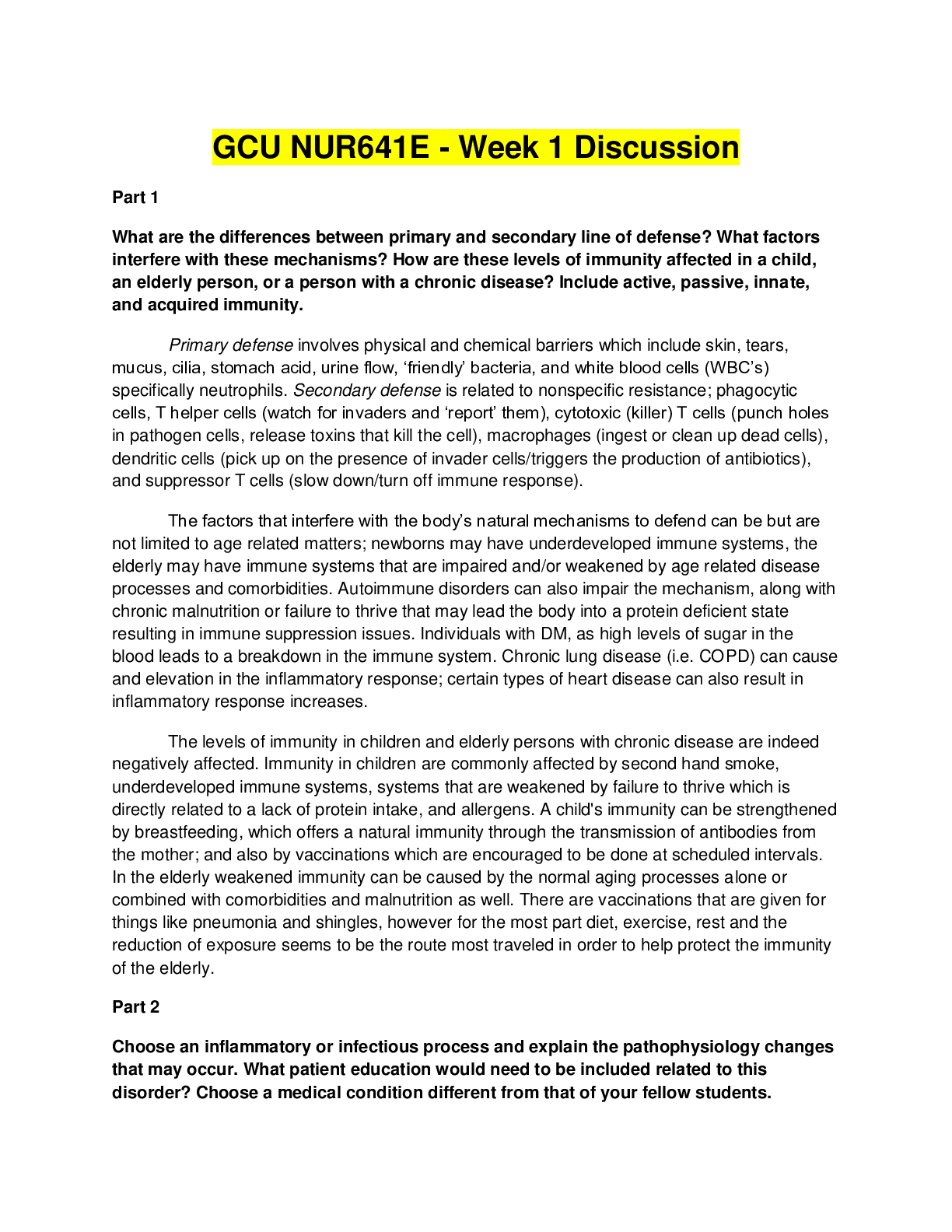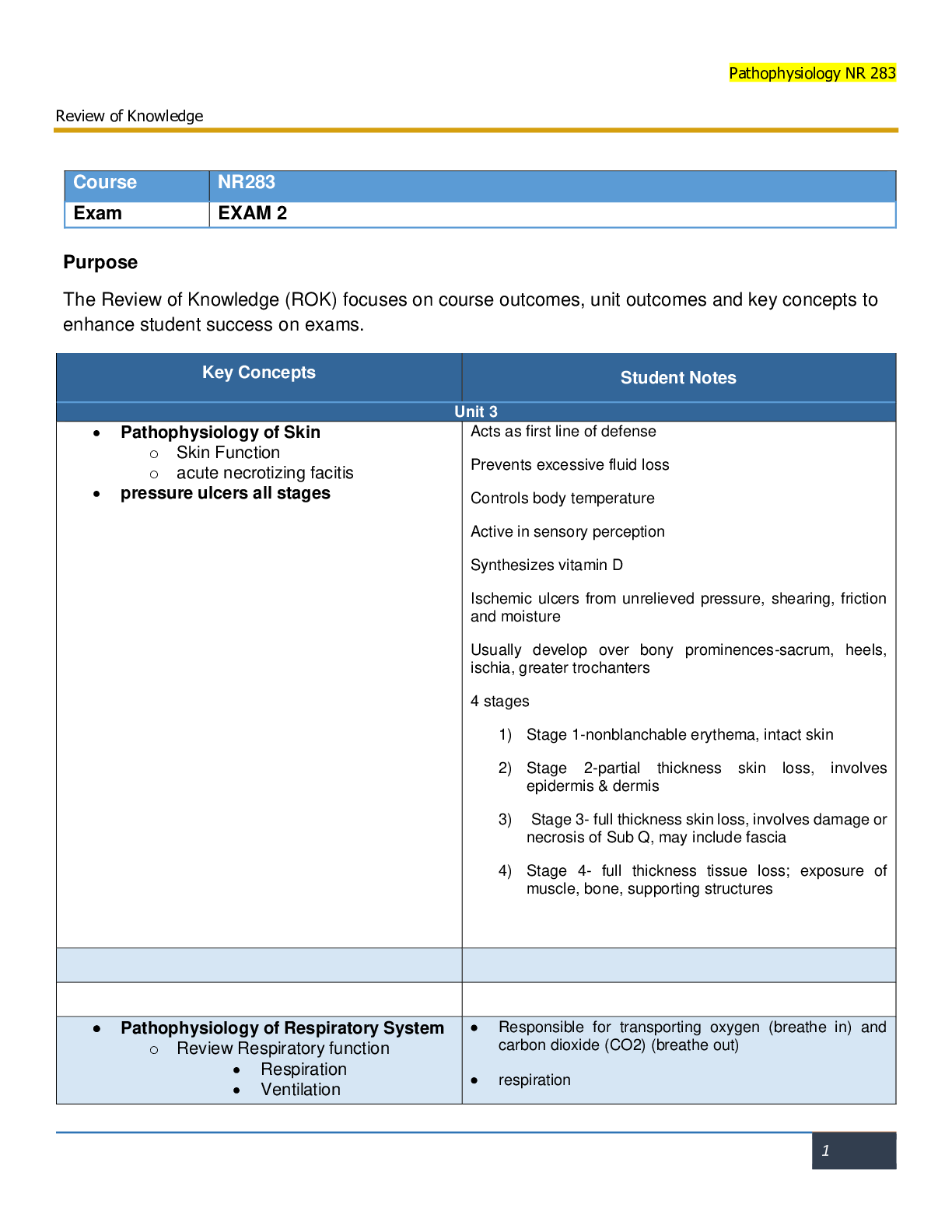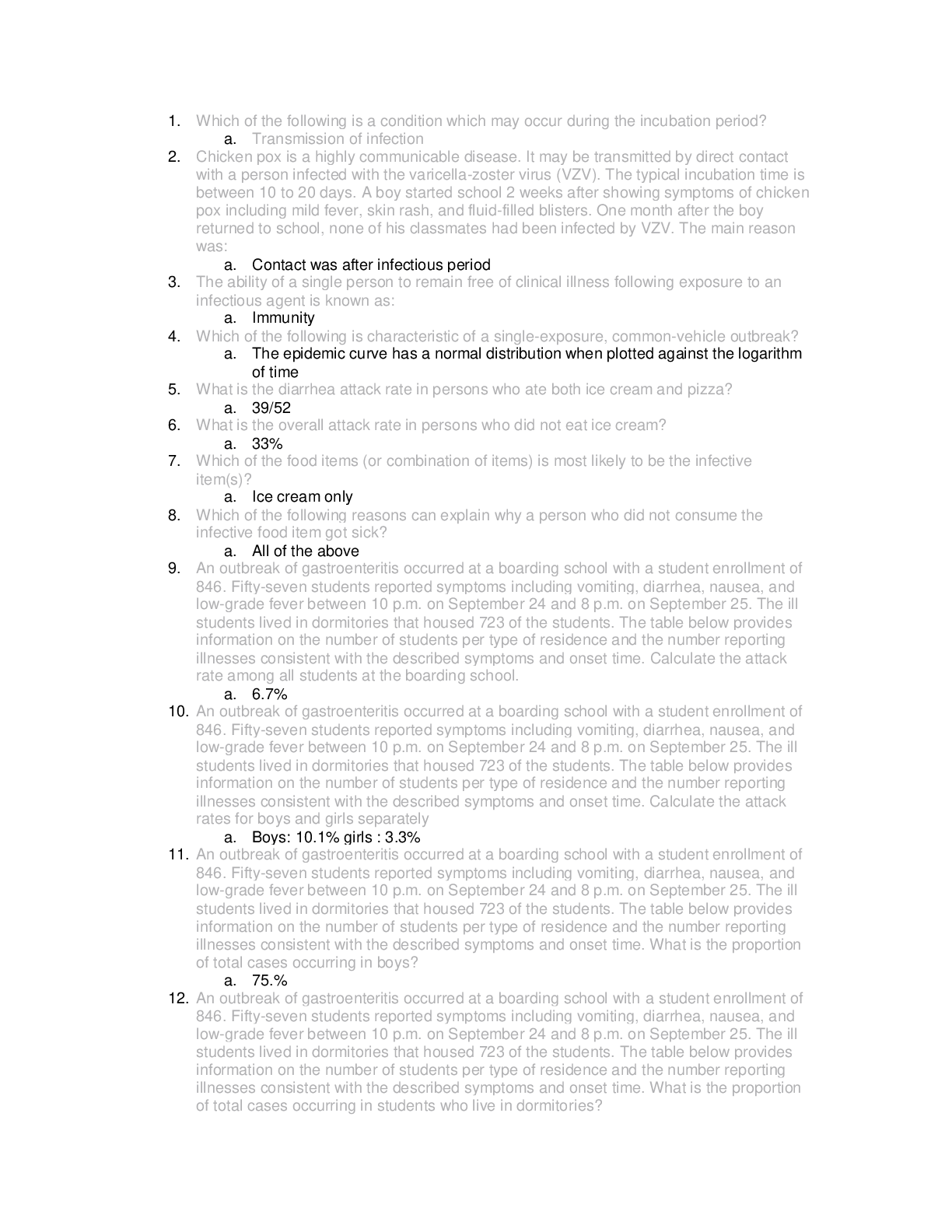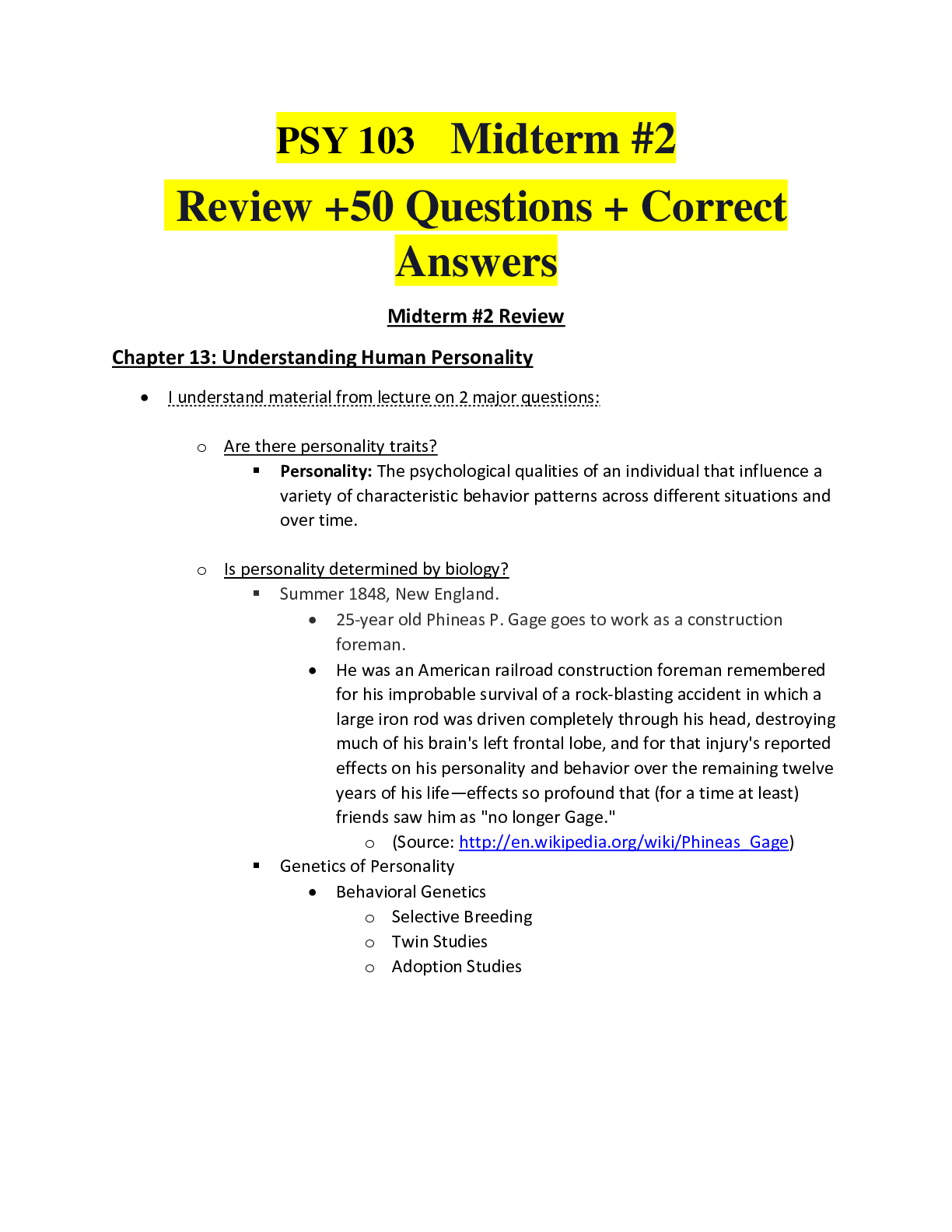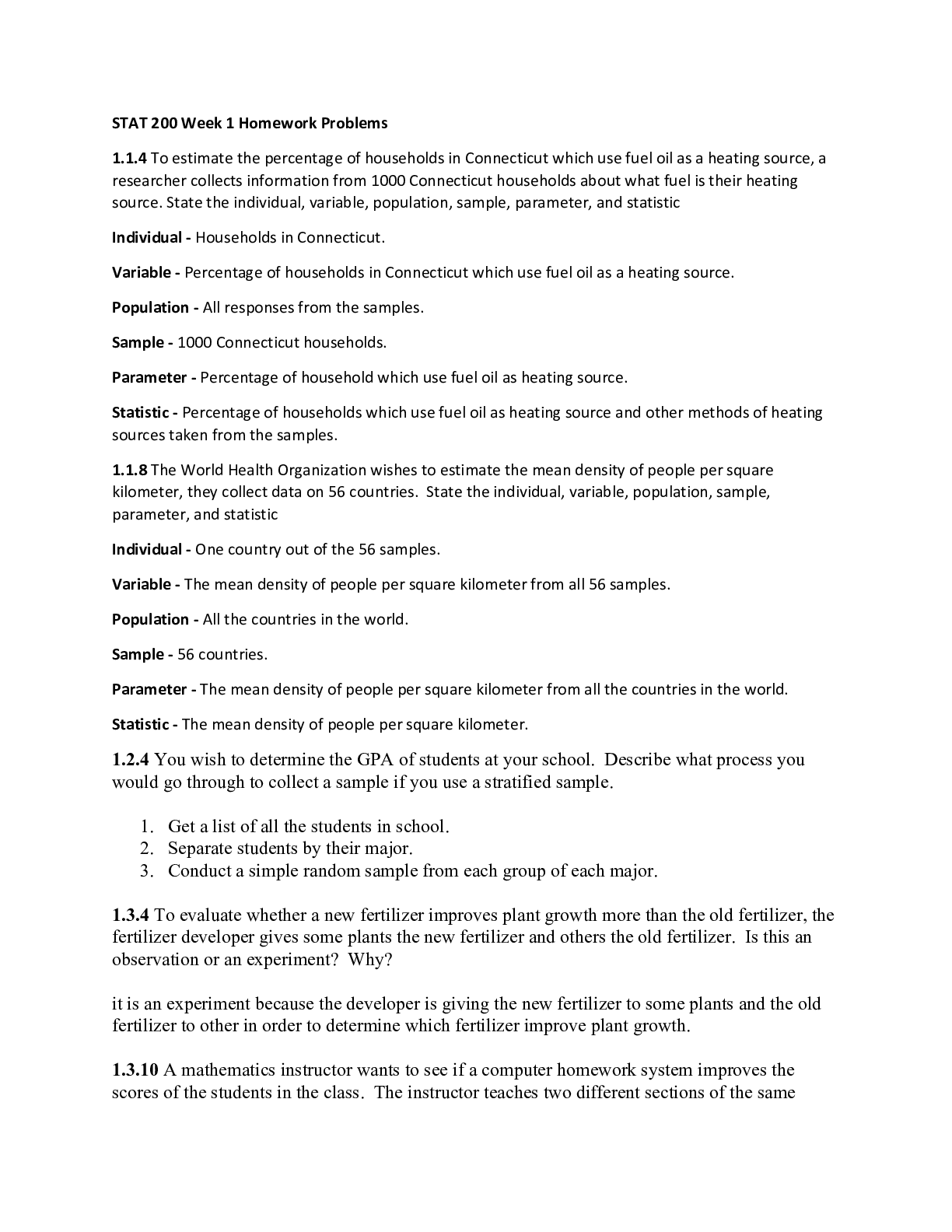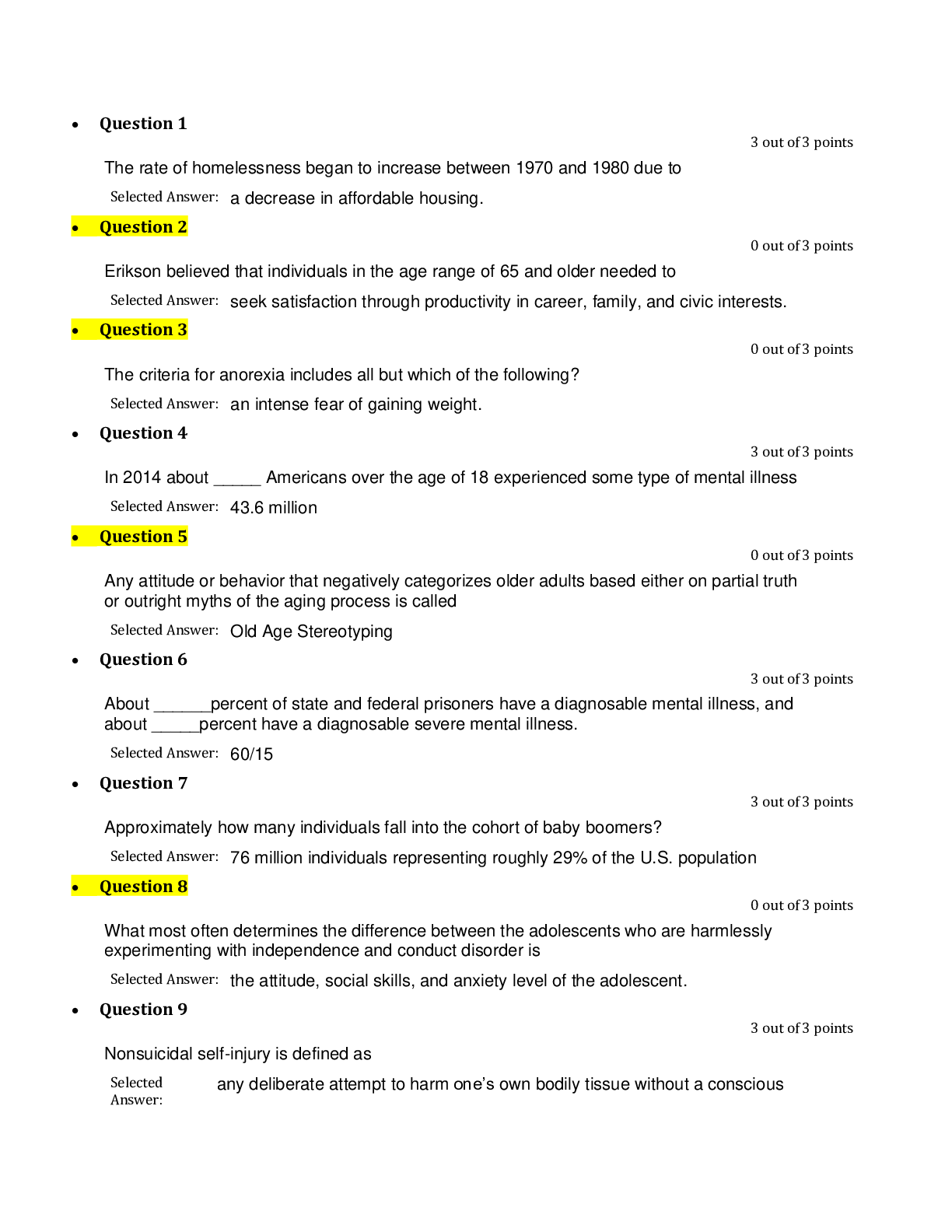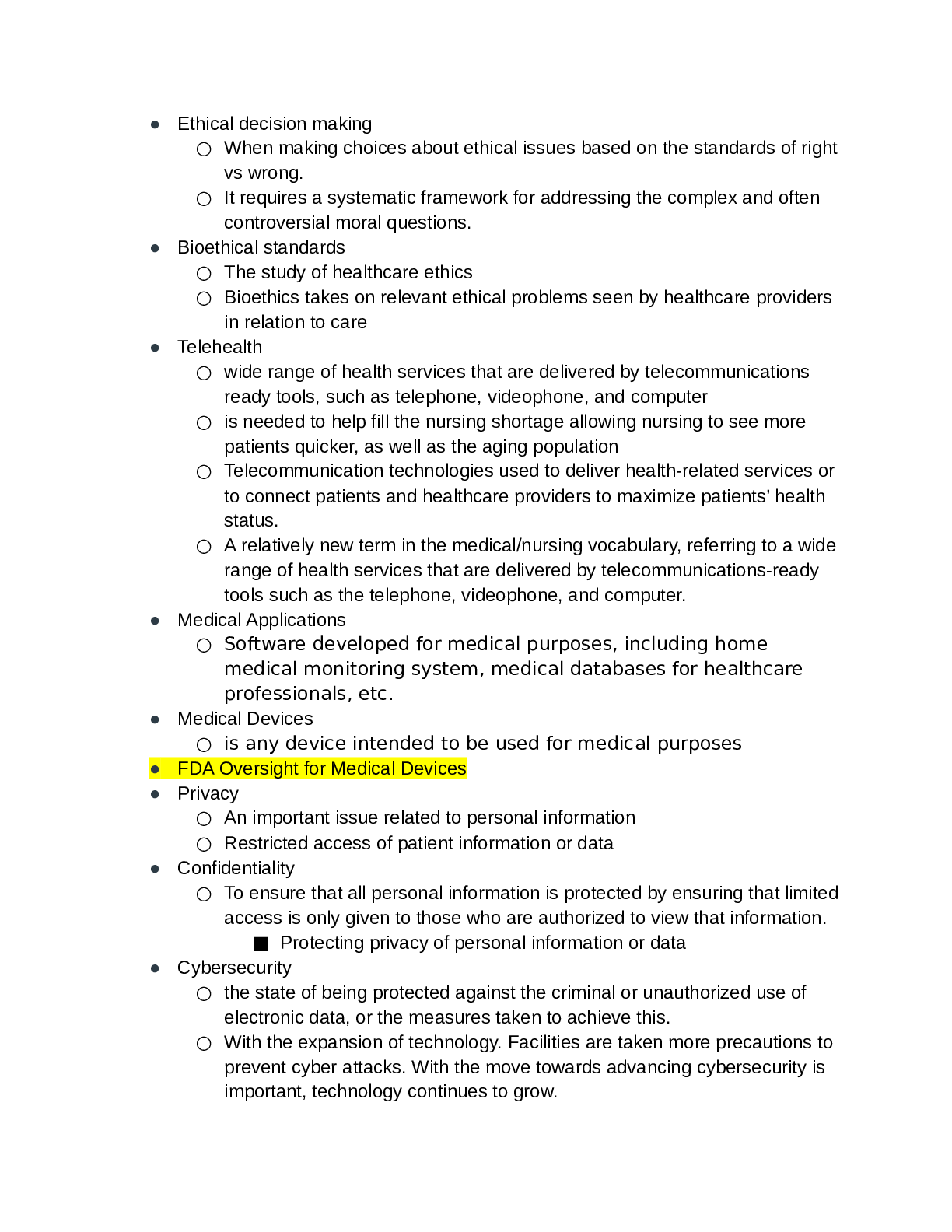Anatomy > STUDY GUIDE > BIOS 252 DISCUSSIONS UNITS 1 - 7; Latest Spring 2020 Complete solutions guide ( A+ Guide). (All)
BIOS 252 DISCUSSIONS UNITS 1 - 7; Latest Spring 2020 Complete solutions guide ( A+ Guide).
Document Content and Description Below
BIOS 252 DISCUSSIONS UNITS 1 - 7 UNIT 1 As a skilled microbiologist, you have been called to Farmer McDonald's farm to investigate an outbreak of sores on the udders of his cows. Your first task i... s to determine whether the causative agent of the sores is a microbe. Explain how you will you use Koch's postulates to accomplish this. The endosymbiotic theory proposes an explanation of the origin of mitochondria, chloroplasts, and eukaryotic cells. Discuss the evidence for this theory. Are you convinced? UNIT 2 What microscope would you use to study the complex interactions of microorganisms in a biofilm? Why is this the best choice? What would be your second choice? Many microorganisms are very fastidious and have never been cultured in a lab. Class, let's discuss the nutritional requirements of bacteria and the techniques for culturing them in a lab. UNIT 3 All living cells are capable of metabolism. Many metabolic pathways are amphibolic. Class, let's discuss the many different ways cells regulate their metabolic pathways to maximize efficiency. Some people argue that viruses cannot be considered alive. Do you agree with this statement? Defend your answer. UNIT 4 You be the expert: Imagine you are a teaching a class on controlling microbial growth in the environment. To test your students, you will present them with a scenario including a site and some probable microbes present. They must design a strategy to eliminate harmful microbes from the area. In this discussion, each student (at a minimum) should present a scenario for analysis by his or her classmates, propose an answer to another classmate's scenario, and respond to all classmates who attempt to address the scenario. Be as creative as you can! Discuss why MRSA presents a major public health issue. Propose some ways to limit or remove this threat. UNIT 5 Individuals with third-degree burns are particularly vulnerable to infection. Can you speculate about why this is so? Your friend Bruce calls in a panic. He has just come from the doctor and been diagnosed with a bacterial infection. The doctor told him not to worry; his B cells will take care of it in no time! Knowing that you are studying the immune response, he is calling to ask you to explain this statement. Is the doctor correct? Is there more to the story? UNIT 6 You are the public health official! Review the following case study, and discuss how you should proceed as an epidemiologist. Case study: Over 30 children younger than three years of age developed gastroenteritis after visiting a local water park. These cases represented 44% of the park visitors in this age group on the day in question. Older individuals were not affected. The causative agent was determined to be a member of the bacterial genus Shigella. The disease resulted from oral transmission to the children. Based only on the information given, can you classify this outbreak as an epidemic? Why or why not? If you were an epidemiologist, how would you go about determining which pools in the water park were contaminated? The assigned readings encompass a wide variety of diseases associated with various organ systems. Using the information in your text (and any other resources you choose), give your patient one of these diseases from the organ system discussed this week, and present the history and symptoms to the class. Be creative! Be sure to offer enough information to make an educated guess, but try not to give it away too soon! Each student should present a case. Be sure to let those who respond to your case know whether they correctly diagnosed the patient. In some cases, you might offer new test results midweek if the class is stumped! UNIT 7 Class, we discussed the term microbial antagonism in Unit 2 and have come across many examples of how it helps us against pathogenic microorganisms. Let's discuss the role of the intestinal microbiota in the maintenance of health and the many opportunistic pathogens that cause disease when the delicate balance of normal microbiota in this region of the body is disturbed. The assigned readings encompass a wide variety of diseases associated with infectious microbes. This week, we focus on the respiratory, digestive, urinary, and reproductive systems. As we did last week, using the information in your text (and any other resources you choose), give your patient a disease associated with any of these systems and present the history and symptoms to the class. Be creative! Be sure to offer enough information to make an educated guess, but try not to give it away too soon! Each student should present a case. Be sure to let those who respond to your case know whether they correctly diagnosed the patient. In some cases, you might offer new test results midweek if the class is stumped! [Show More]
Last updated: 2 years ago
Preview 1 out of 8 pages

Buy this document to get the full access instantly
Instant Download Access after purchase
Buy NowInstant download
We Accept:

Reviews( 0 )
$10.00
Can't find what you want? Try our AI powered Search
Document information
Connected school, study & course
About the document
Uploaded On
Apr 02, 2020
Number of pages
8
Written in
Additional information
This document has been written for:
Uploaded
Apr 02, 2020
Downloads
0
Views
81

